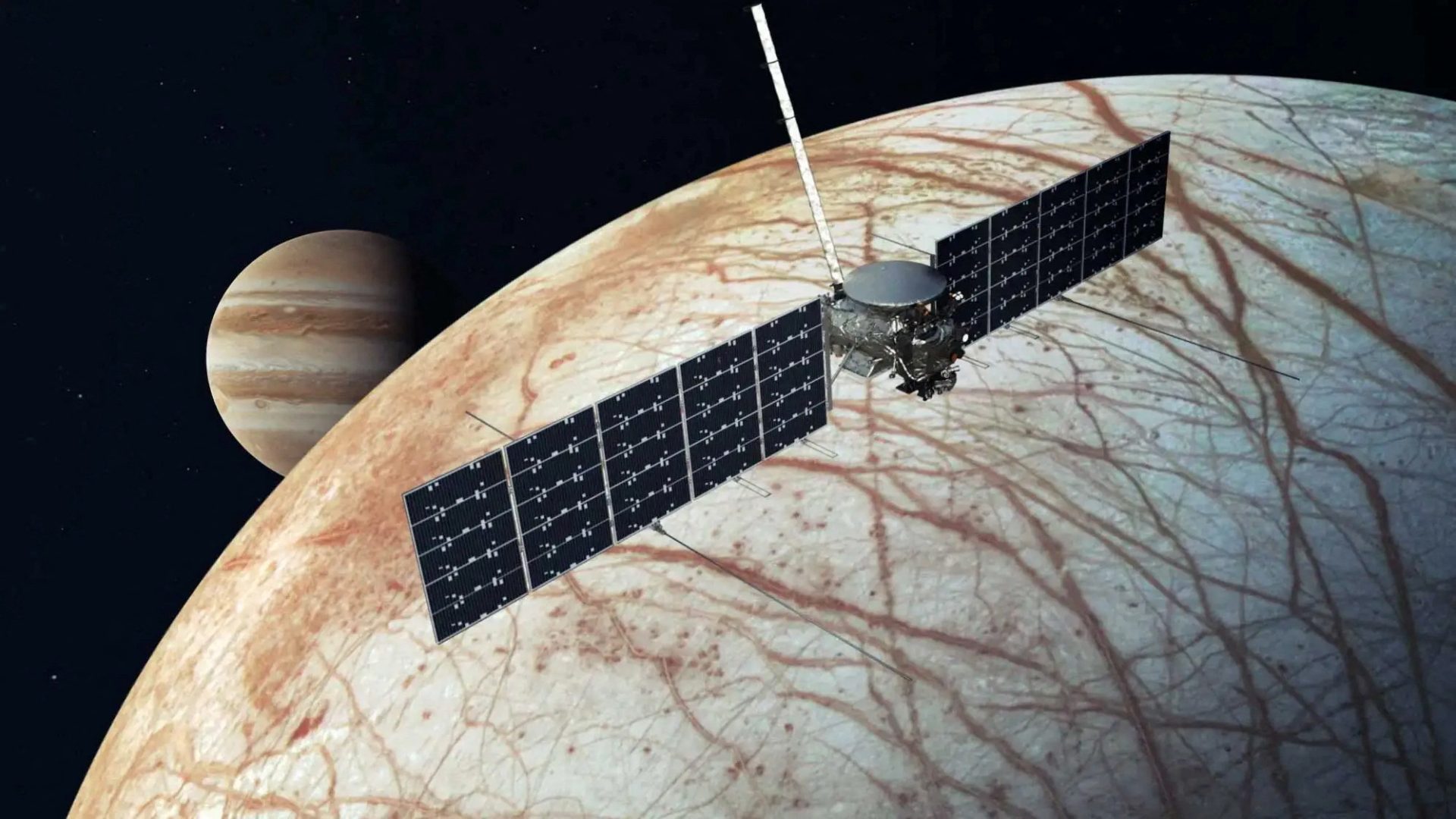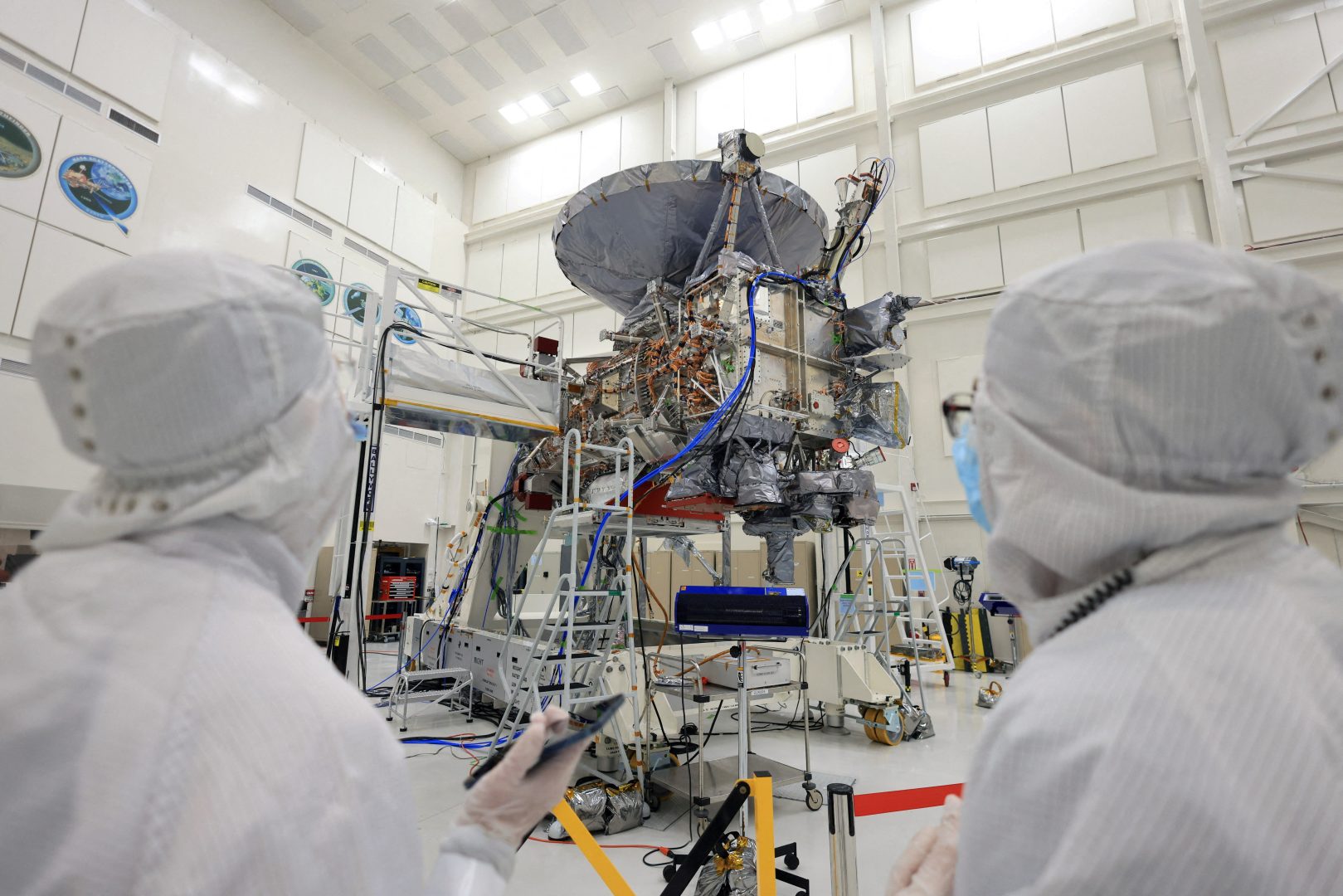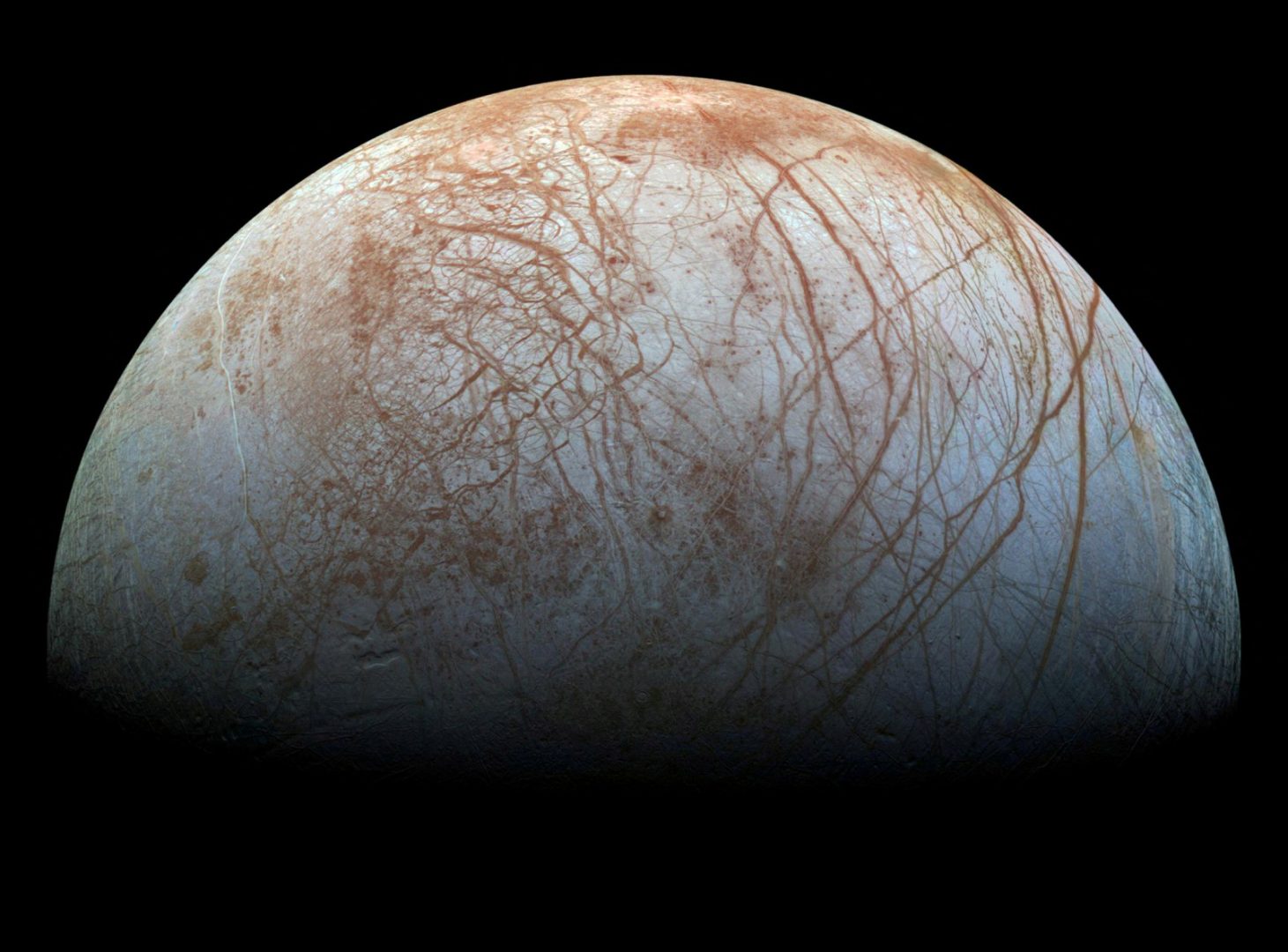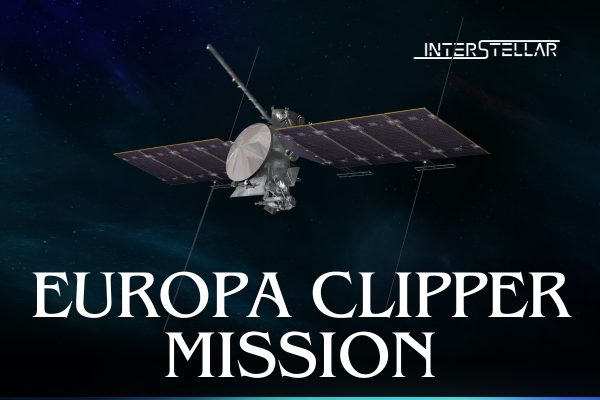NASA’s Europa Clipper Mission Set to Explore Jupiter’s Icy Moon
NASA is preparing to launch a spacecraft to Jupiter’s moon Europa, considered one of the most promising locations for finding life beyond Earth. Europa, encased in ice, is thought to contain a vast underground ocean, which makes it a prime target for studying habitability.

Europa Clipper: A Groundbreaking Mission
The Europa Clipper spacecraft, powered by solar energy, will be launched aboard a SpaceX Falcon Heavy rocket from the Kennedy Space Center. The launch is scheduled for Monday at 12:06 p.m. ET, following a delay caused by Hurricane Milton. Once launched, the spacecraft will travel 1.8 billion miles (2.9 billion km) to reach Jupiter, where it will enter orbit around the planet by 2030.
The spacecraft carries nine scientific instruments aimed at exploring Europa’s icy surface and subsurface ocean. These instruments will help scientists better understand whether the moon’s environment could support life.

Key Objectives of the Mission
NASA’s Europa Clipper will investigate the moon’s icy shell and the ocean beneath it. While the mission is not designed to detect life, it will explore whether conditions on Europa could support it. Scientists believe Europa contains a salty liquid water ocean beneath its thick ice crust, a key factor for habitability.
Bonnie Buratti, deputy project scientist for the mission, explained, “There is very strong evidence that the ingredients for life exist on Europa. But we have to go there to find out.”
The spacecraft will measure the ice layer’s thickness, study Europa’s composition, and map its geology. It will conduct 49 close flybys of Europa during its mission, offering scientists a detailed look at this intriguing moon.

An Ocean World
Europa, often called an “ocean world,” has an equatorial diameter of about 1,940 miles (3,100 km), making it roughly 90% the size of Earth’s moon. Although smaller than Earth, Europa’s subsurface ocean may contain twice as much water as all of Earth’s oceans combined.
The moon’s ocean could be warmed by tidal forces from Jupiter’s immense gravitational pull. This process generates heat, which may support life near thermal vents at the bottom of Europa’s ocean. These vents could be similar to those found in Earth’s deep oceans, where primitive life forms thrive.
Europa Clipper’s MASPEX instrument will study the moon’s chemistry, looking for complex organic molecules that could serve as food for potential primitive organisms.
NASA hopes that exploring Europa will reveal new insights into the potential for life elsewhere in our solar system. As Buratti said, “There is going to be something there—the unknown—that is going to be so wonderful that we can’t conceive of it right now.”





